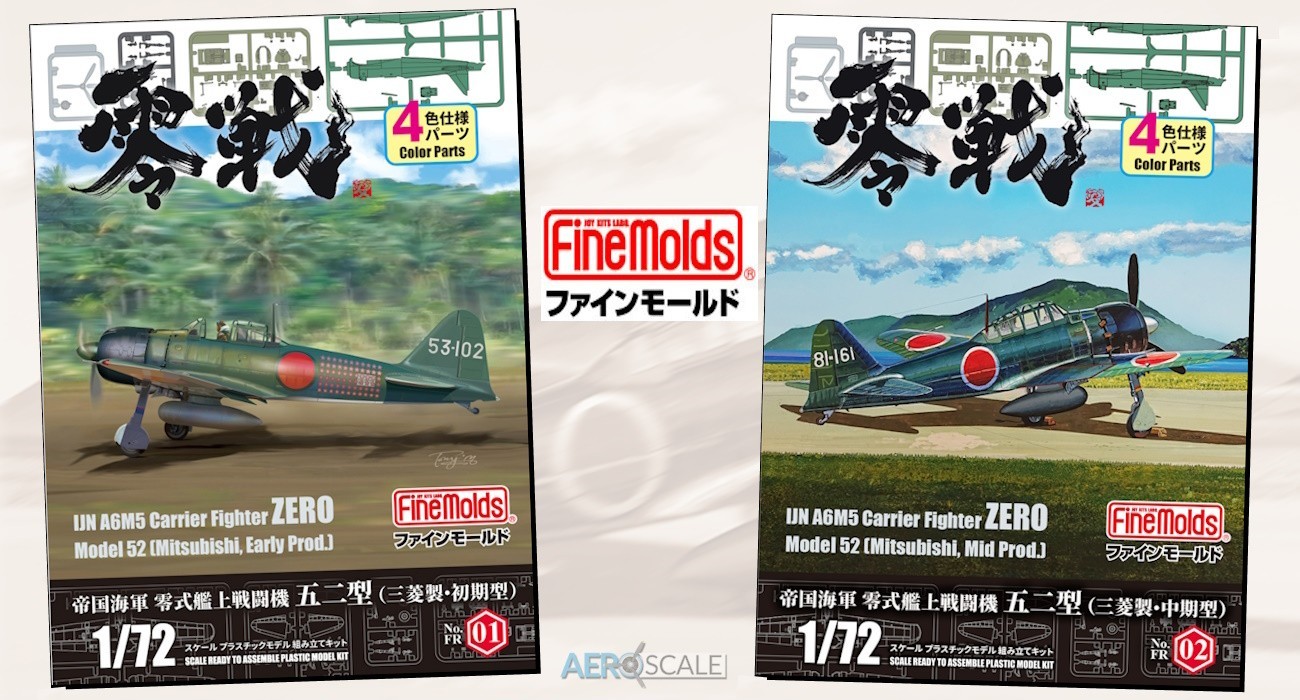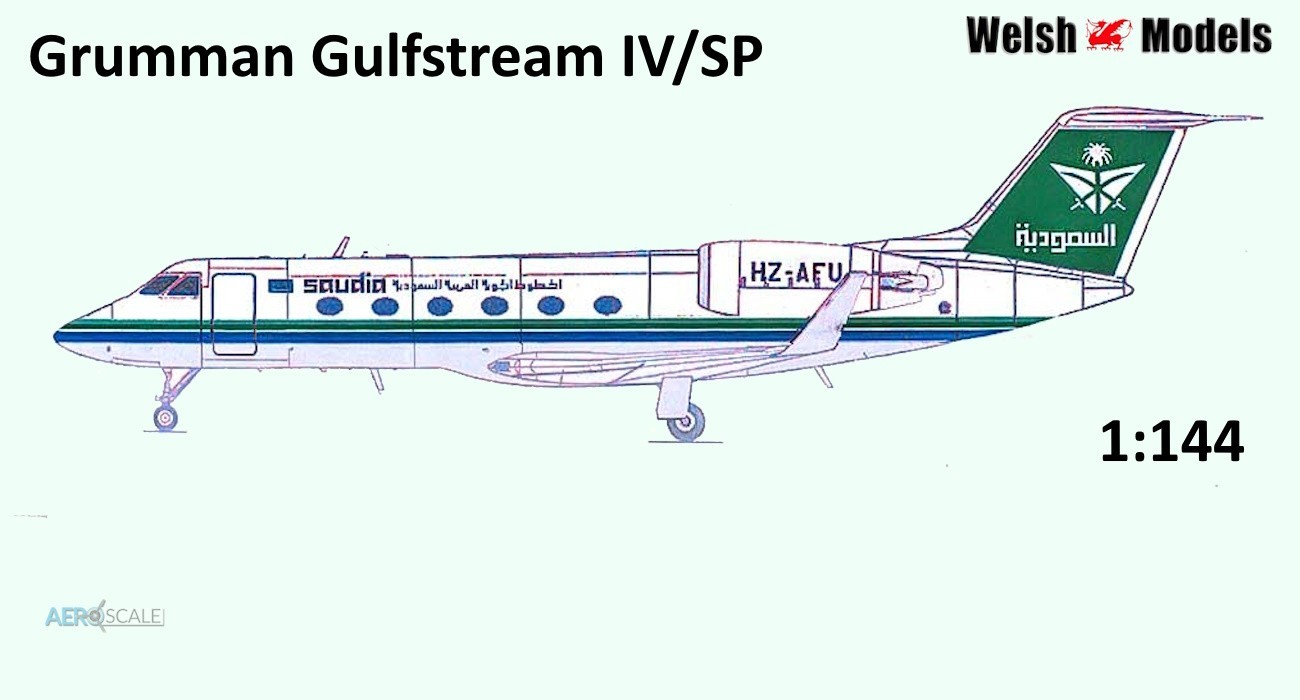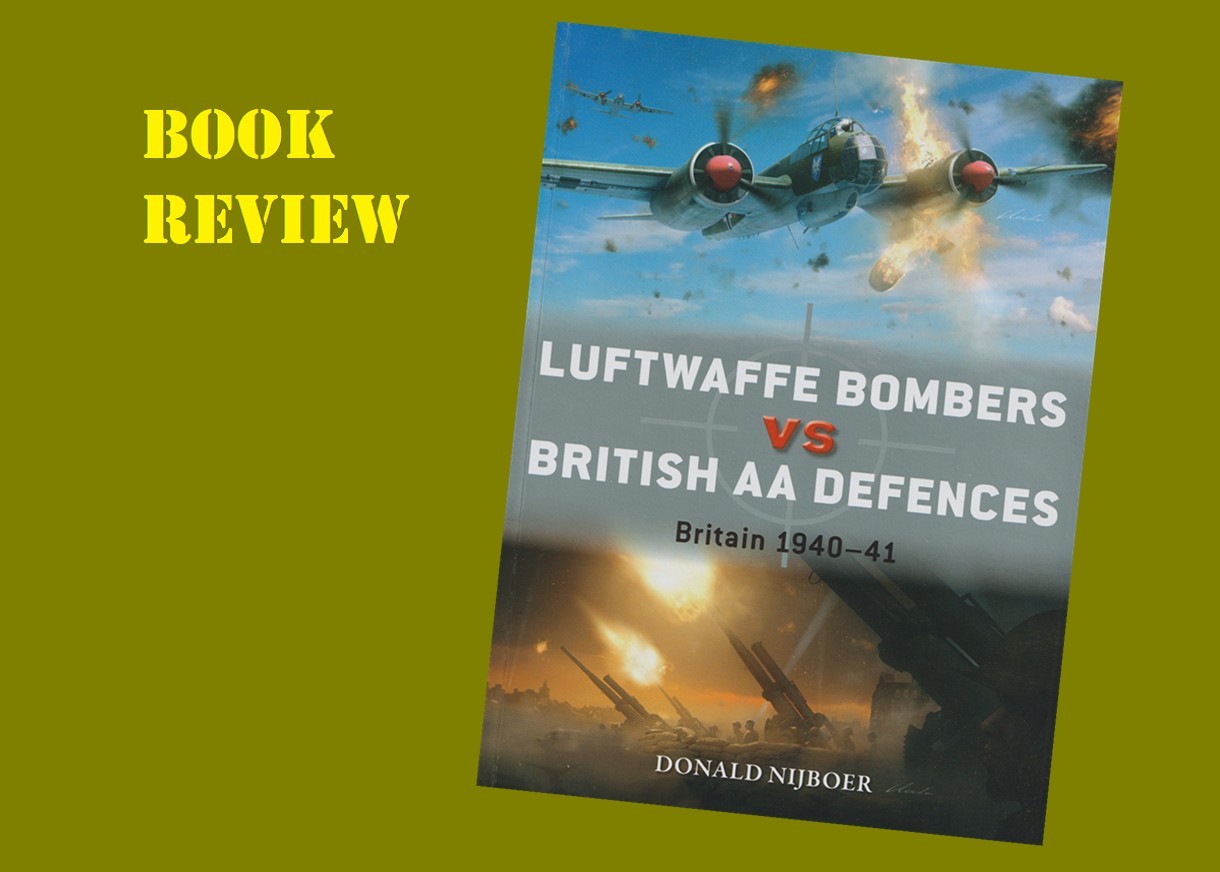
Background
The Sopwith Camel replaced the Sopwith Puppy which was showing signs of being outclassed by German fighters. The Camel was powered by various single rotary engines including the Clerget 9B or the Bentley BR1. It was highly maneuverable dog fighter in the hands of an experienced pilot particularly at low speeds and altitude. Unfortunately, it was a handful for less experienced aviators. RFC pilots used to joke that it offered the choice between "a wooden cross, the Red Cross, or a Victoria Cross"
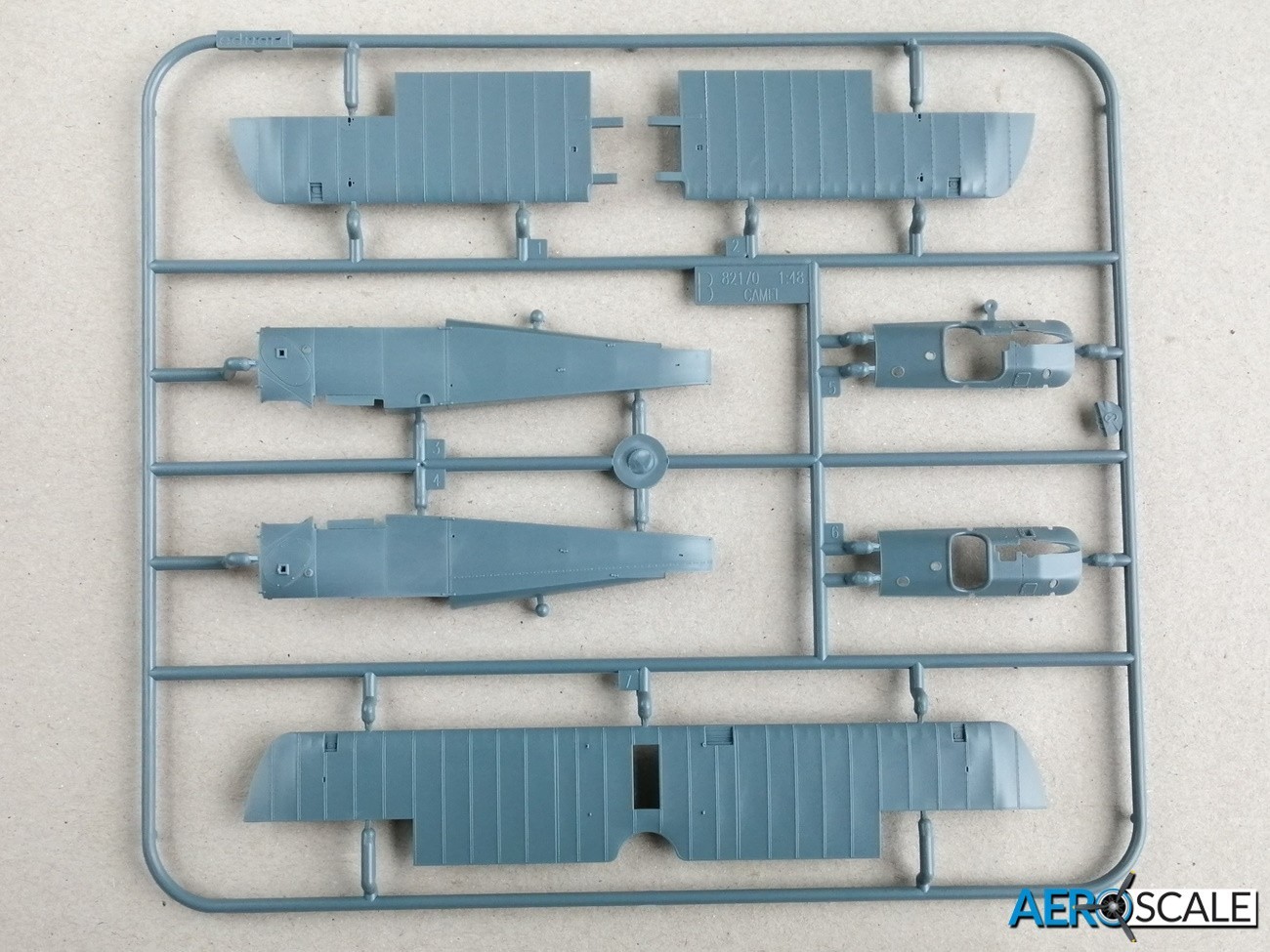

The Camel F.1 was the main variant of the Camel and was armed with twin synchronised 0.303 in Vickers machine guns. Other variants included the 2F.1 Ship's Camel, which operated from gun turrets, flat top ships and aircraft lighters [modified barges]. The Comic F.1/3 night fighter variant was introduced to combat the increasing nocturnal raids by the Germans. Towards the end of WWI, the armoured T.F.1, a ‘trench fighter’ was introduced, designed for attacks on heavily defended ground targets. The T.F.1 could carry a total of four Cooper bombs. A two-seat variant served as a trainer. The last Camels were withdrawn from RAF service in January 1920.

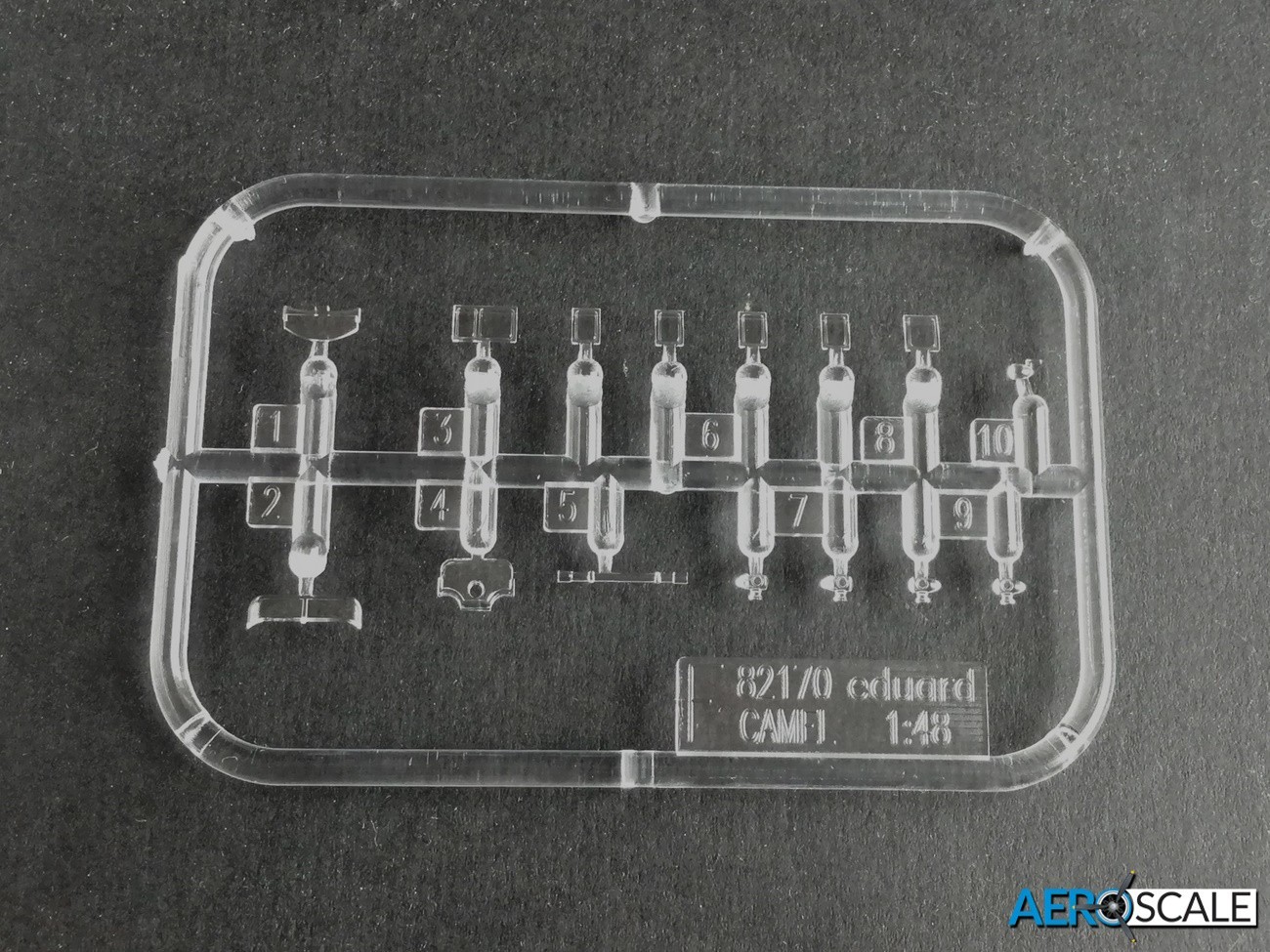
Despite its flying vices the Camel was pressed into the role of a fleet or home defence fighter, though it was not popular with pilots. Two prototypes were built for the RNAS: the N4 with floats and the N5 with wheels. For shipboard storage the rear of the fuselage was separable. The RNAS Camels were launched from platforms mounted on the turrets of large warships as well as from some of the earliest aircraft carriers to be built. The Camel could be deployed from aircraft lighters which were specially modified barges. The had to be towed fast enough that a Camel could successfully take off. The aircraft lighters served as means of launching interception sorties against incoming enemy air raids from a more advantageous position than had been possible when using shore bases alone.


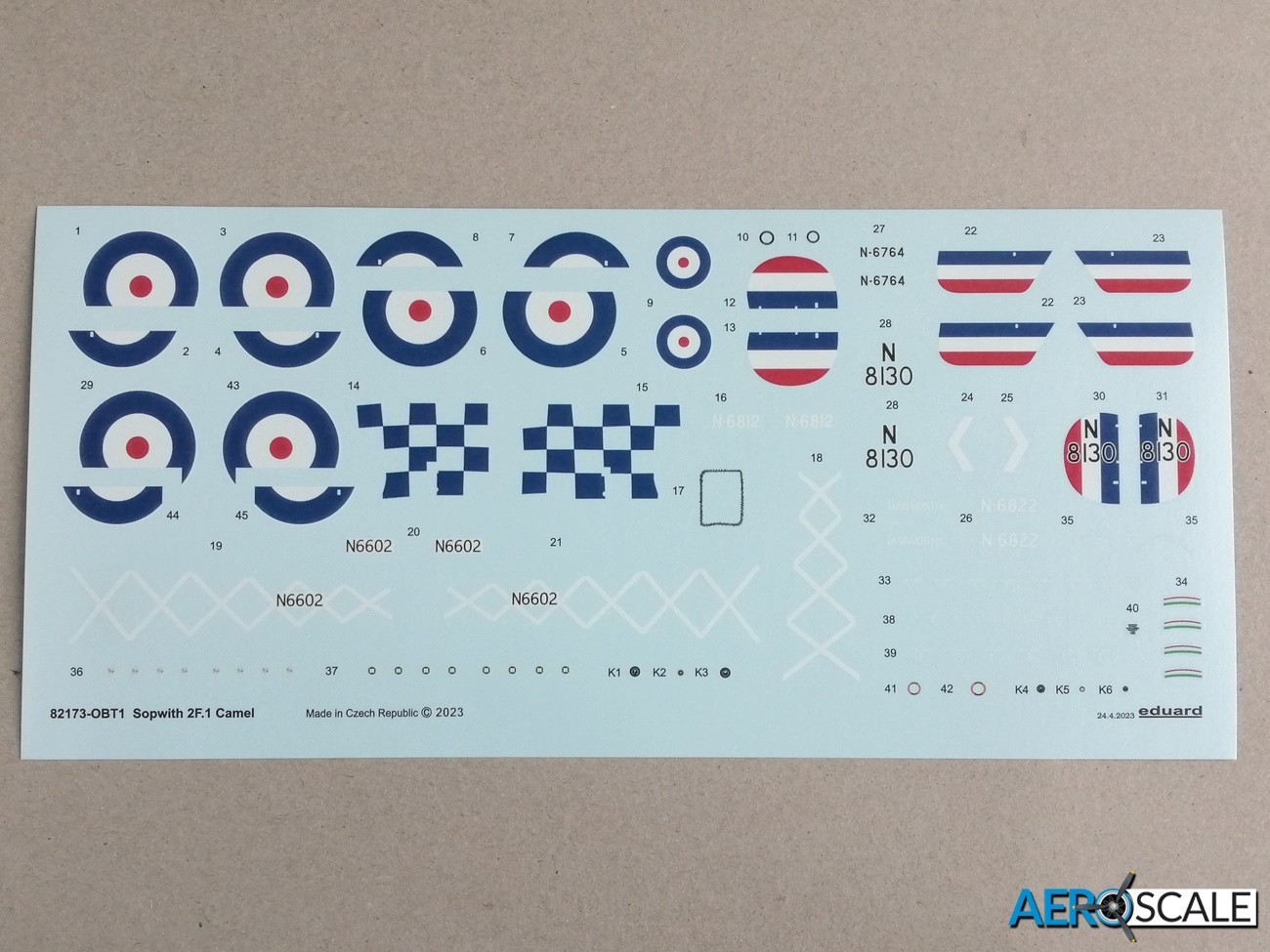
During the summer of 1918, a single 2F.1 Camel (N6814) participated in a series of trials as a parasite fighter. The aircraft used Airship R23 as a mothership
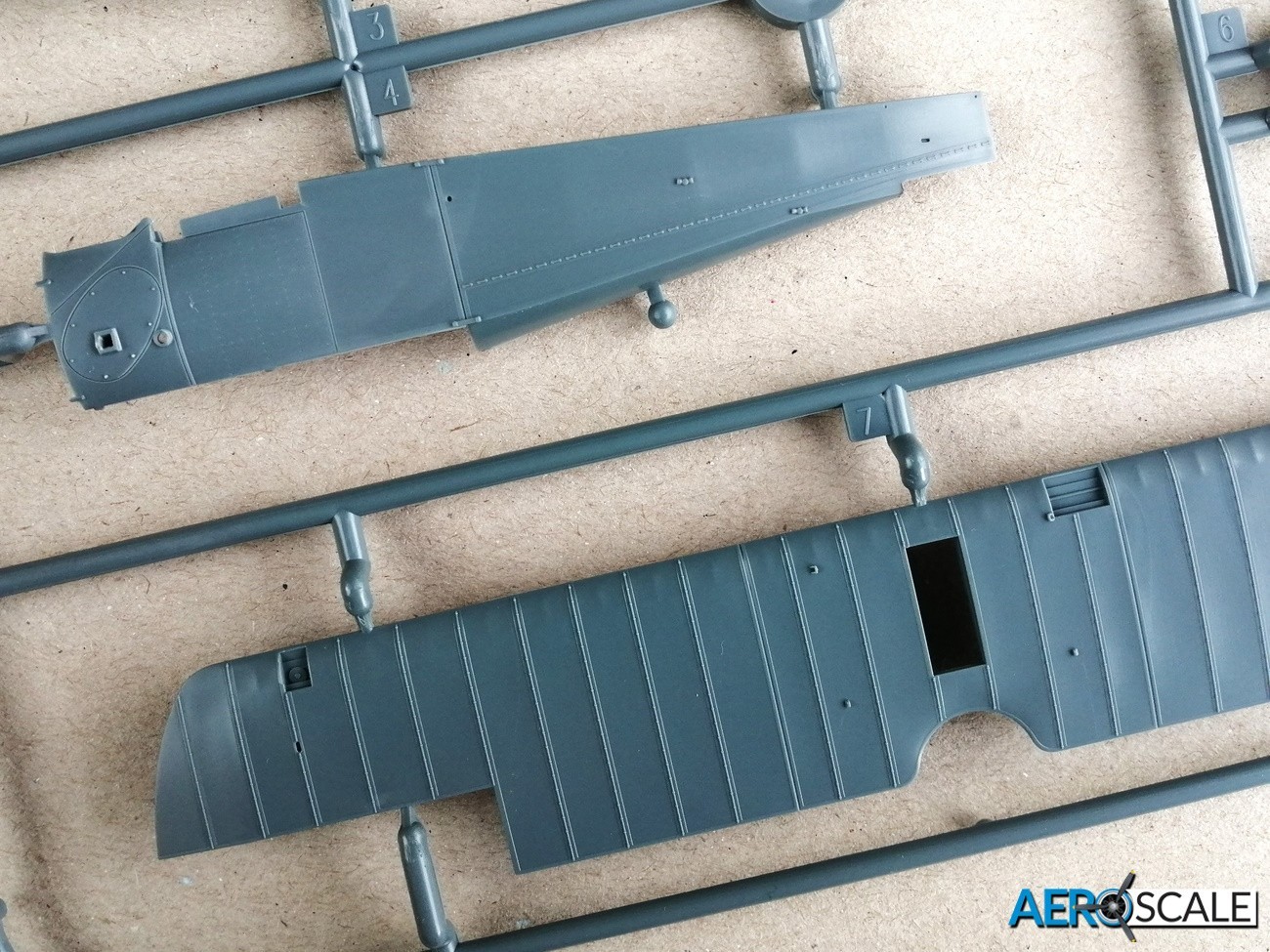


The Kit
Eduard released their first new tool 1:48 scale kit of the legendary British fighter Sopwith Camel in 2021. This release of the 2F-1 Camel is Eduard’s sixth Edition of the Sopwith fighter [Scalemates]. Option ‘A’ is the subject of the boxart. It depicts Capt. Bernard A. Smart leading the first ever ship born bombing raid. The group successfully attacked the Zeppelin hangars at Tondern in Denmark.
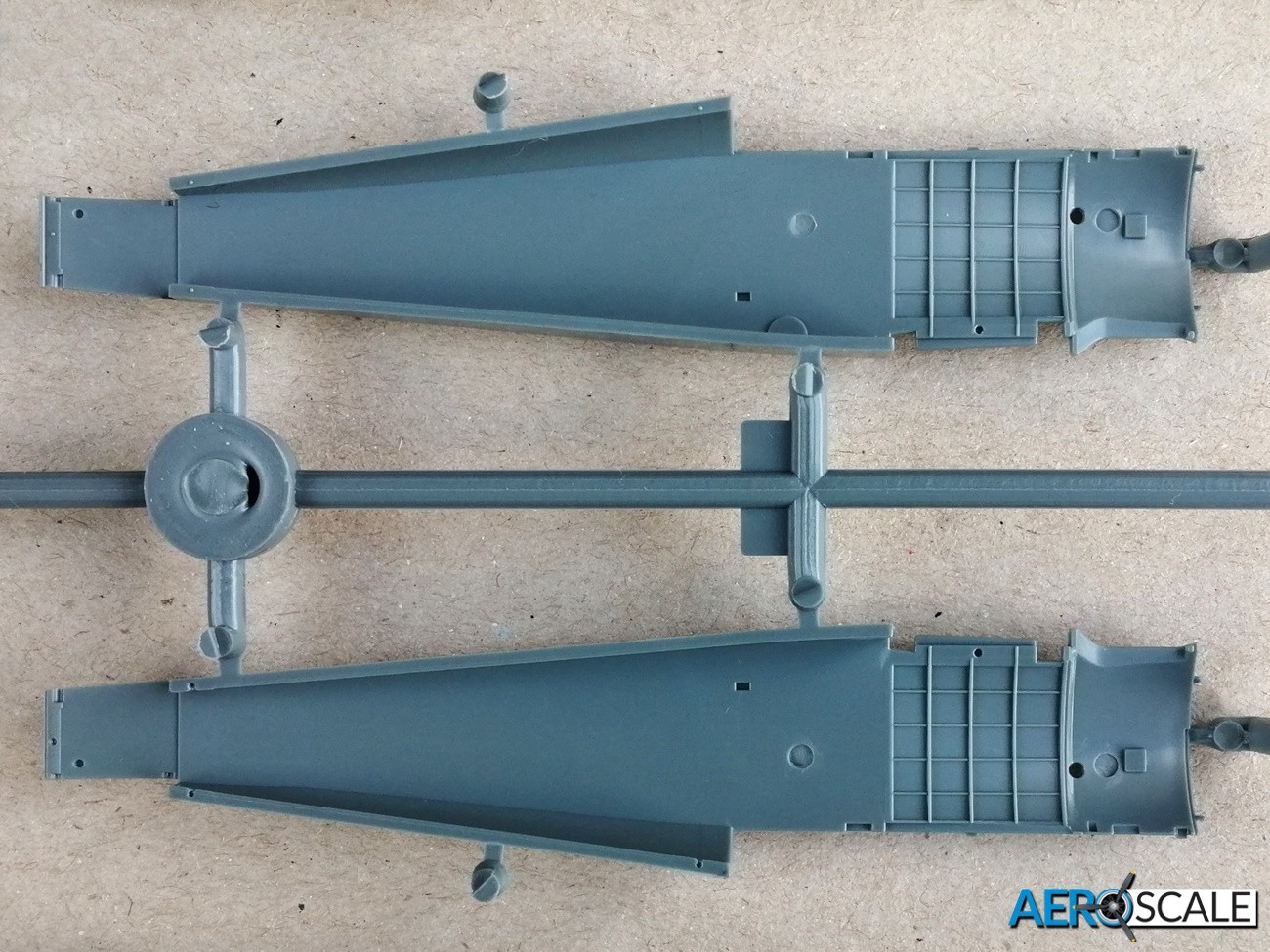
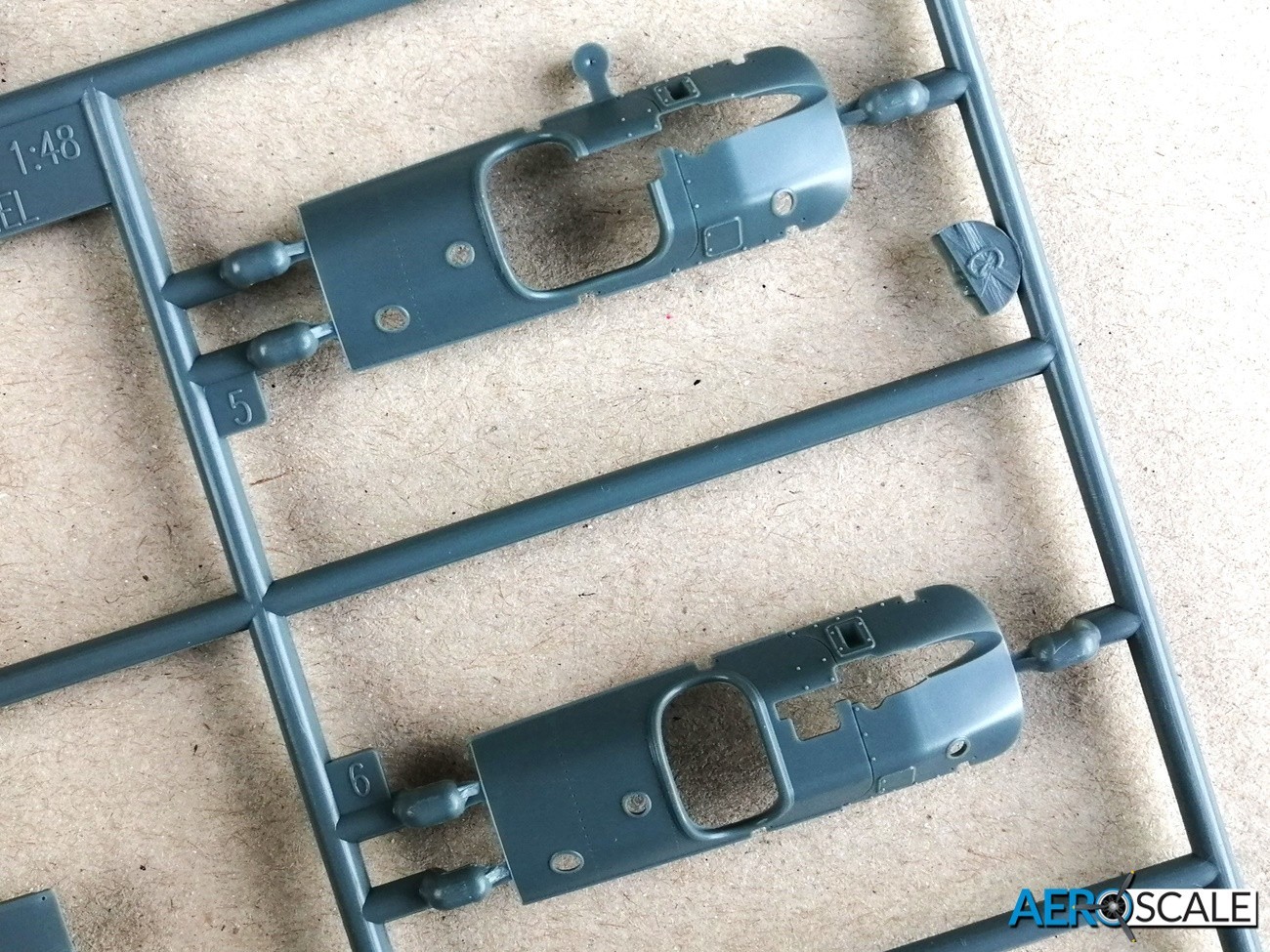
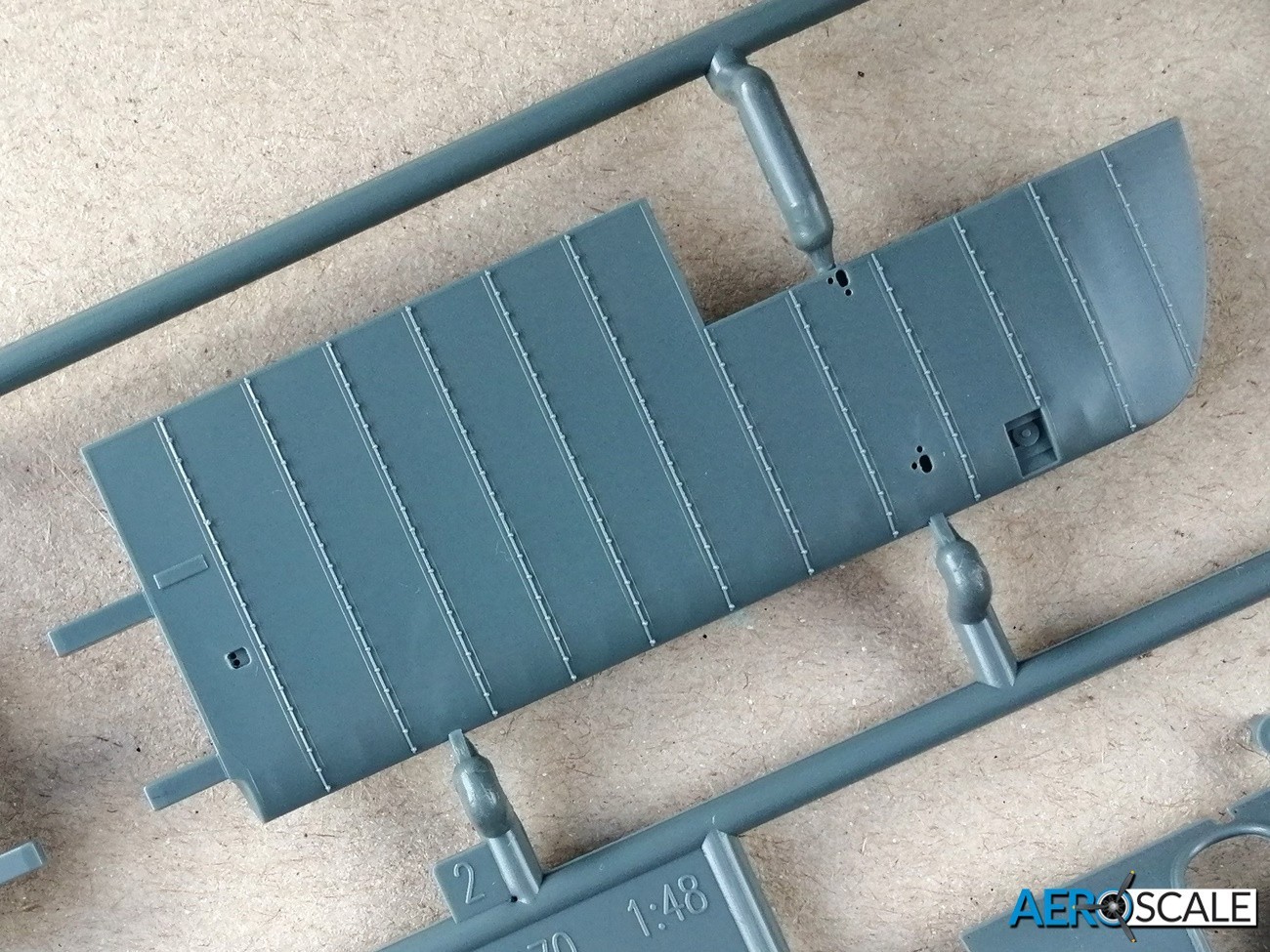
Inside the top opening box of this ProfiPACK Edition, you will find:
- 3 x grey plastic sprues
- 1 x clear plastic sprue
- 1 x pre-coloured photo etch fret
- 1 x paint masks
- 1 x decal sheet.
- 1 x 16 page instruction manual
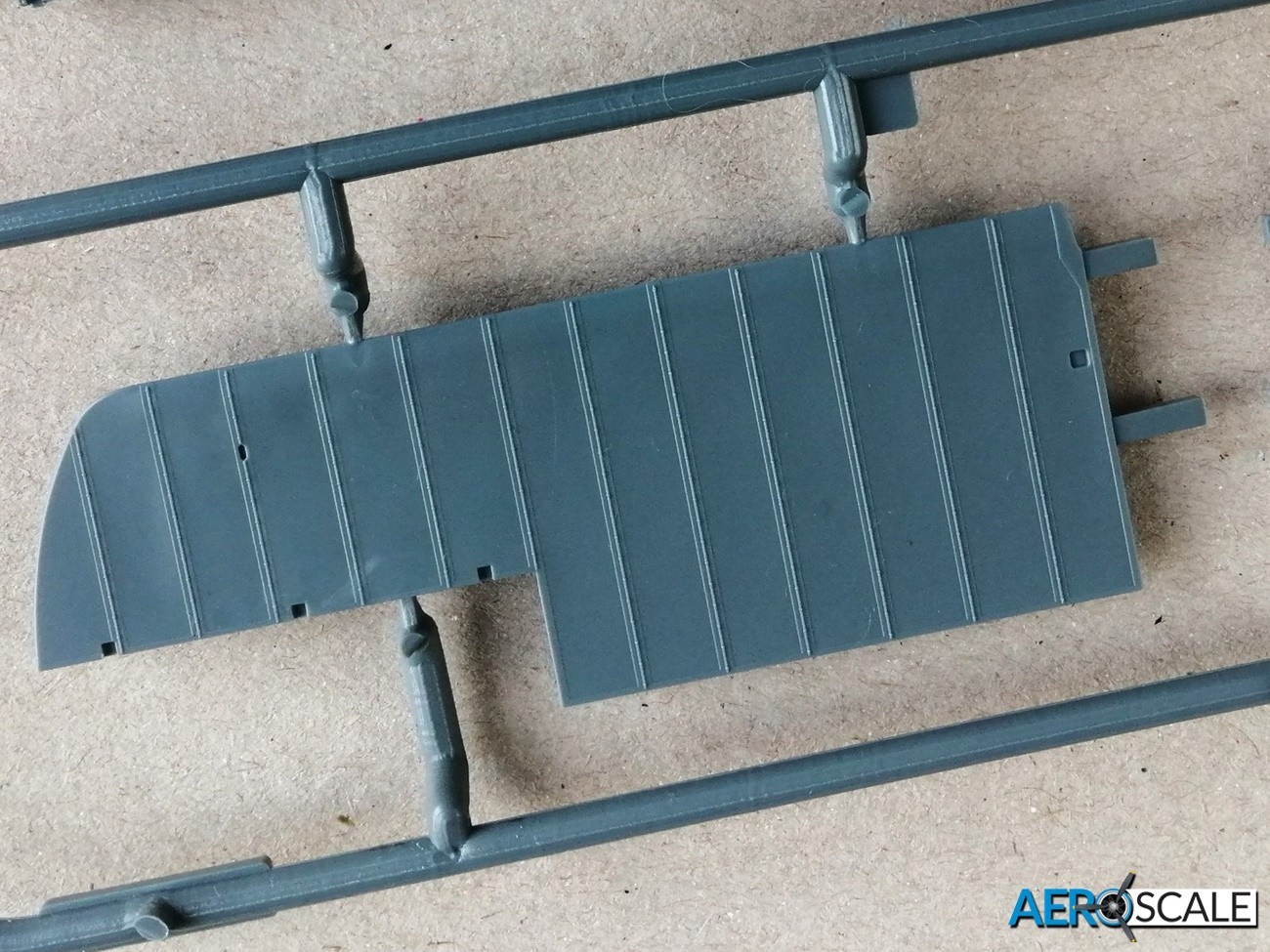

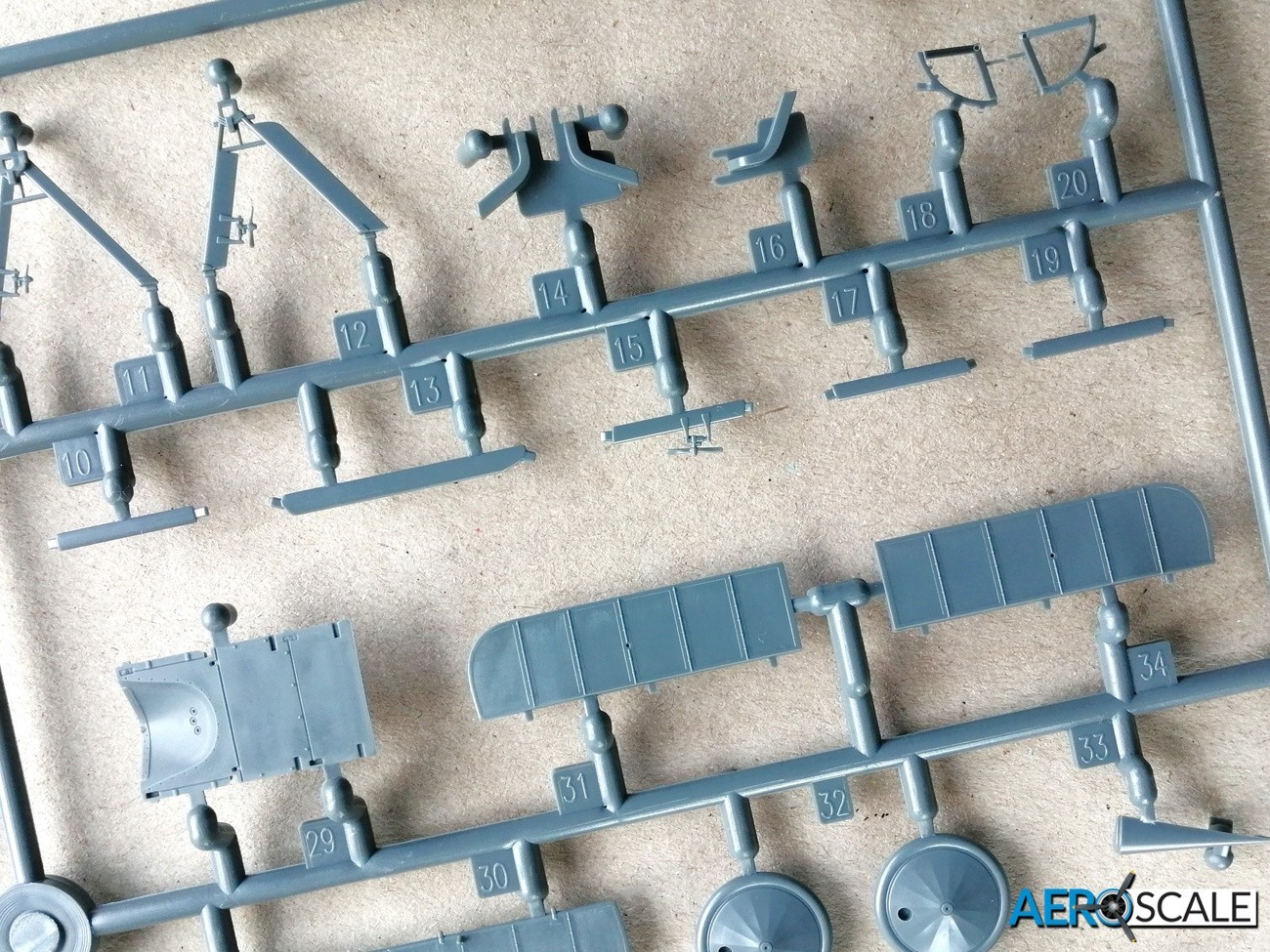
There are not many parts for the cockpit, but never the less its well detailed. You can either use the plastic seats with a slight wicker pattern moulded on it. Or you can use the rather impressive pre-coloured photo etched parts with the etched wicker pattern. The seat is fitted onto a frame, just in front of the separate fuel tank. PE seat harness is included. The plastic runner board acting as a floor for the cockpit has rudder pedals and a spade handle style control column to add. The instrument panel can be created using superb looking pre-coloured PE or you can use the plastic parts with decal instrument faces. The butt of the Lewis gun is added to the instrument panel. The interior of the cockpit has frame work moulded onto the side walls. There is also a separate frame to add to the sidewalls. One of the clear windscreens is used


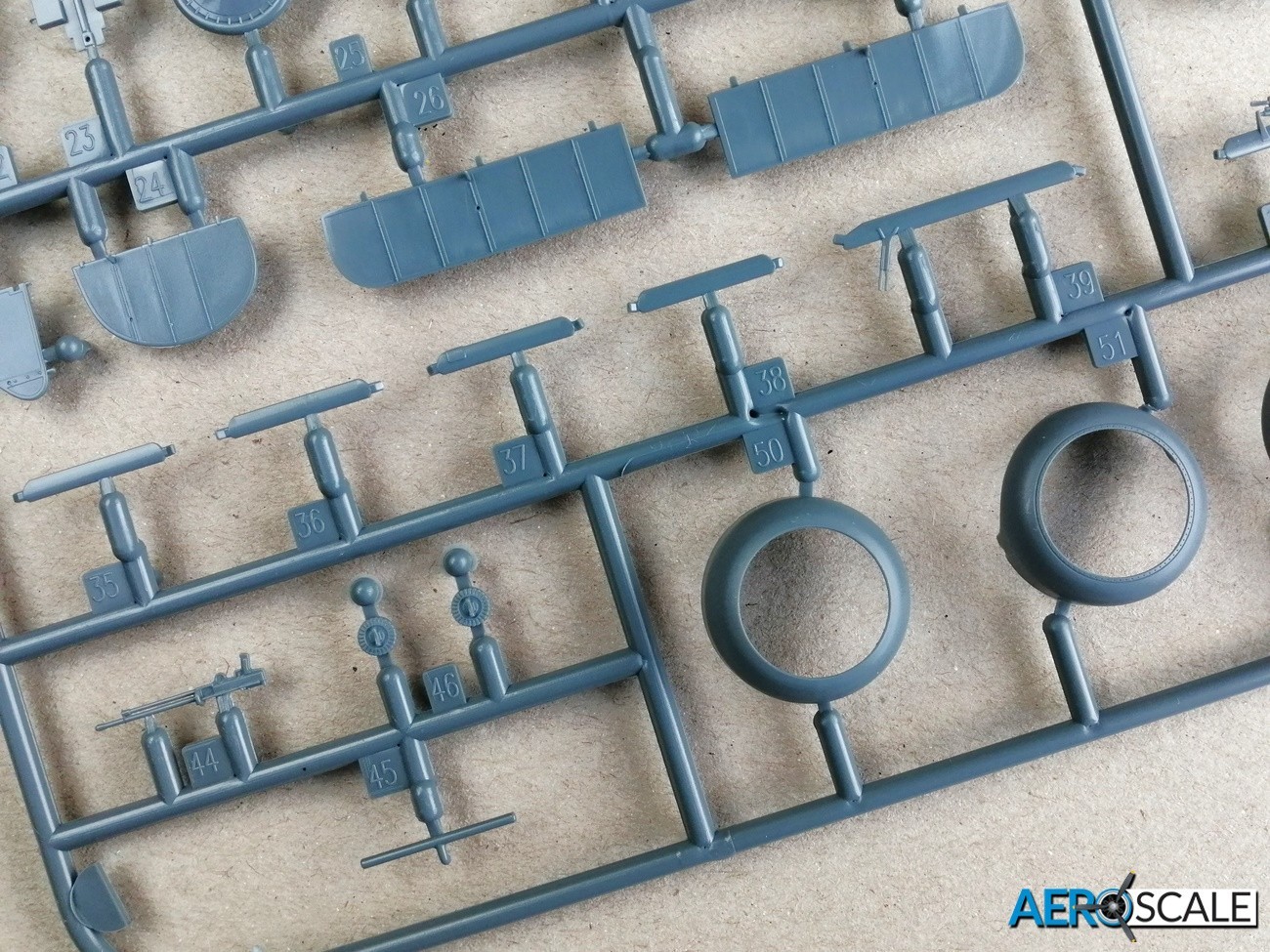
The detail representing the stretched fabric surface and the stitching is superb, some of the best I’ve seen. Other detail, such as the raised fasteners and recessed screws are delicately done. Eduard has made the upper deck aft of the engine a separate part to accommodate the different locations of the cockpit as on the standard Camel airframe and Sopwith Comic. To this is added the clear windscreen and the PE gun sights. The superbly detailed vertical tail and rudder are separate parts. There are PE control horns included.


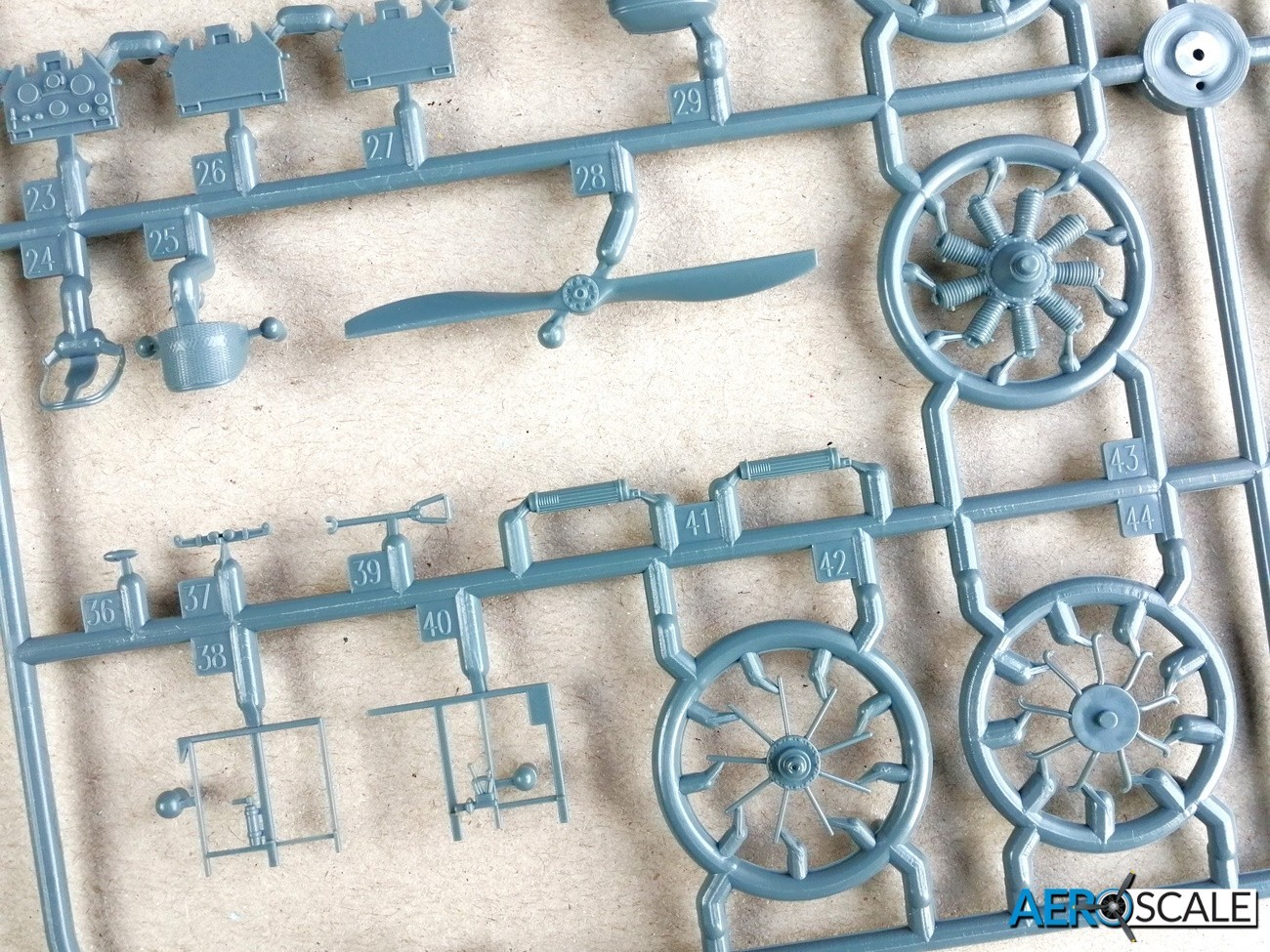
There is a choice of Clerget or the Bentley rotary engines to install. Both powerplants are made up from three parts. Detail for both is superb despite being devoid of PE parts. Some care will be needed removing the ignition harnesses and exhaust piping as the plastic is quite rightly thin, with multiple attachment points. The cowl over the engine is one piece. There is a choice of two propellers, one of the props has a streamlined spinner were as the other has a flat face boss.
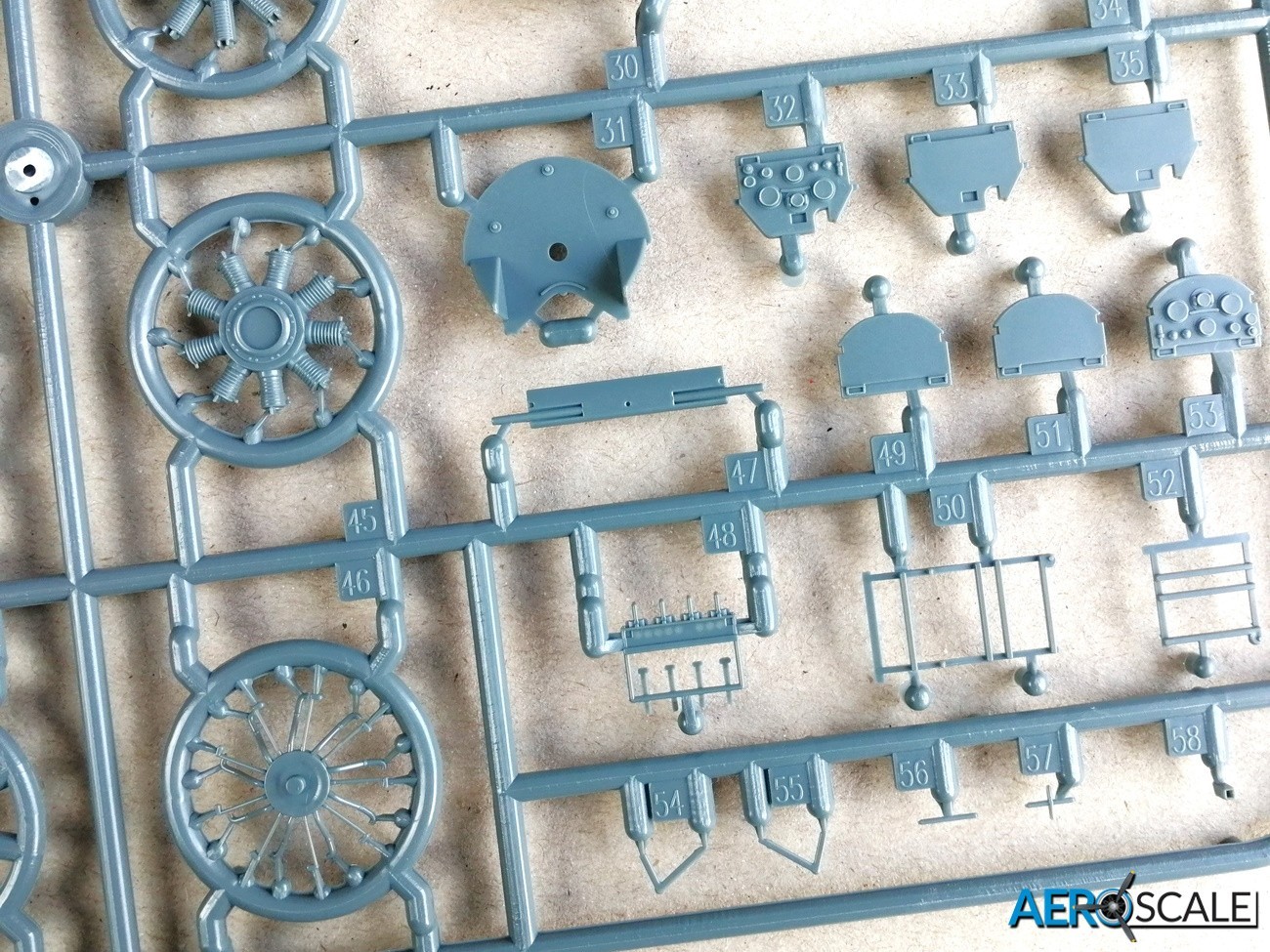


The upper wing is one piece and the lower wings are split in two with left and right wings. The lower wings have generous tabs that fit into the fuselage to create a strong bond. The ailerons in the upper and lower wings are separate. Considering each wing is one piece, there is not a hint of ejector marks. The detail is superb and Eduard has replicated the look of the wing perfectly. The rib tape is perhaps a tad too prominent, though I am sure the paint will tone them down somewhat. The fine representation of the fabric over ribs on the leading edge is also worth noting. Detail even extends to the pulleys and cables tensioning the upper and lower wings. These will be seen through the clear plastic parts representing inspection ports. The interplane and cabane struts do not miss out on the detailing. There is a plastic anemometer attached to the strut. There is also a replacement three-part PE anemometer to attach to an alternate strut, though this looks very fiddly. The location tabs for each strut are generous and should result if attached properly with a strong join. The superbly detailed tail horizontal surfaces are both one piece. The elevators are moulded as one. There are PE control horns included for all the control surfaces. A challenging part of the kit will be fitting the bullet fairing where the cabane rigging cross.
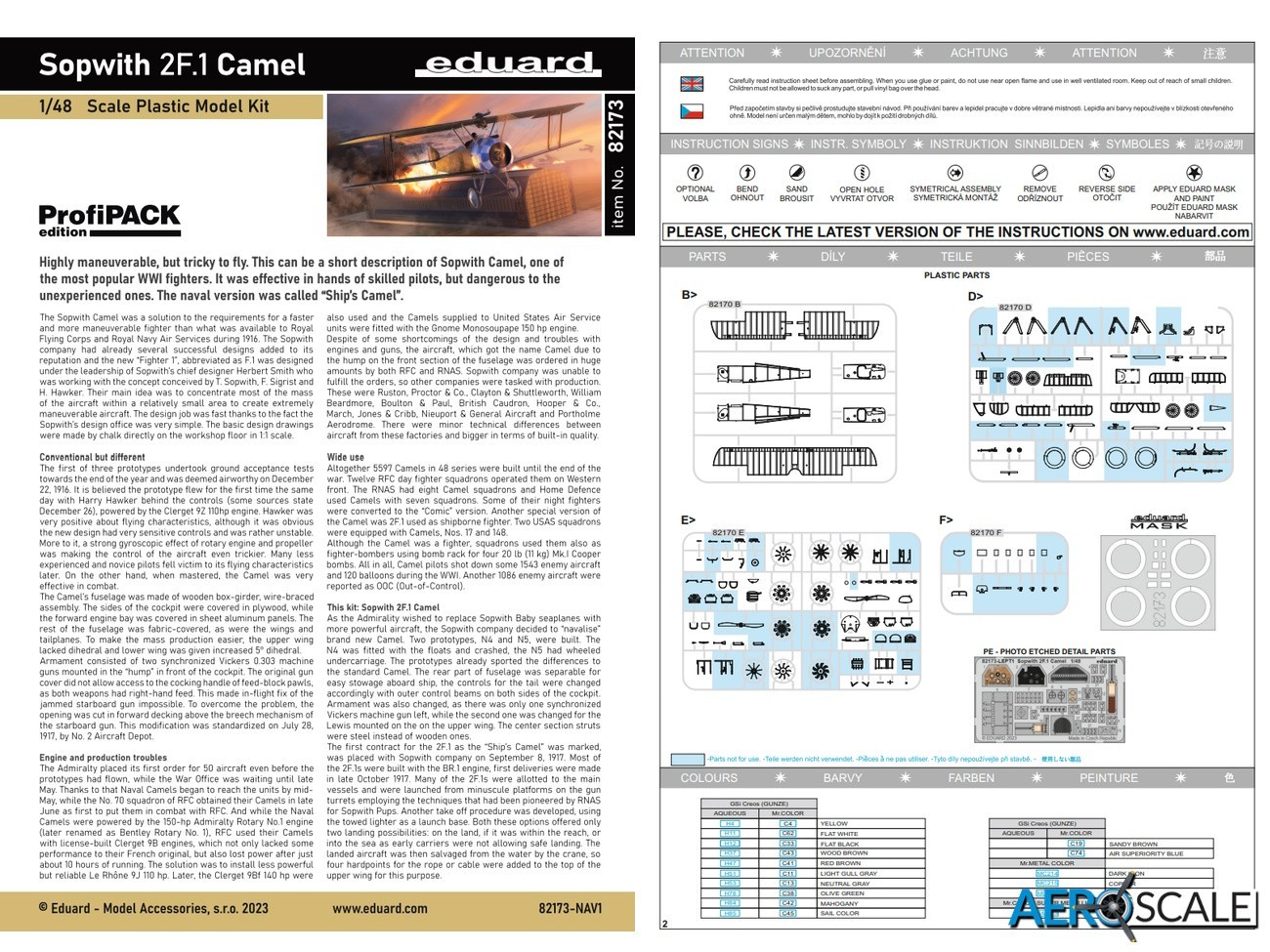
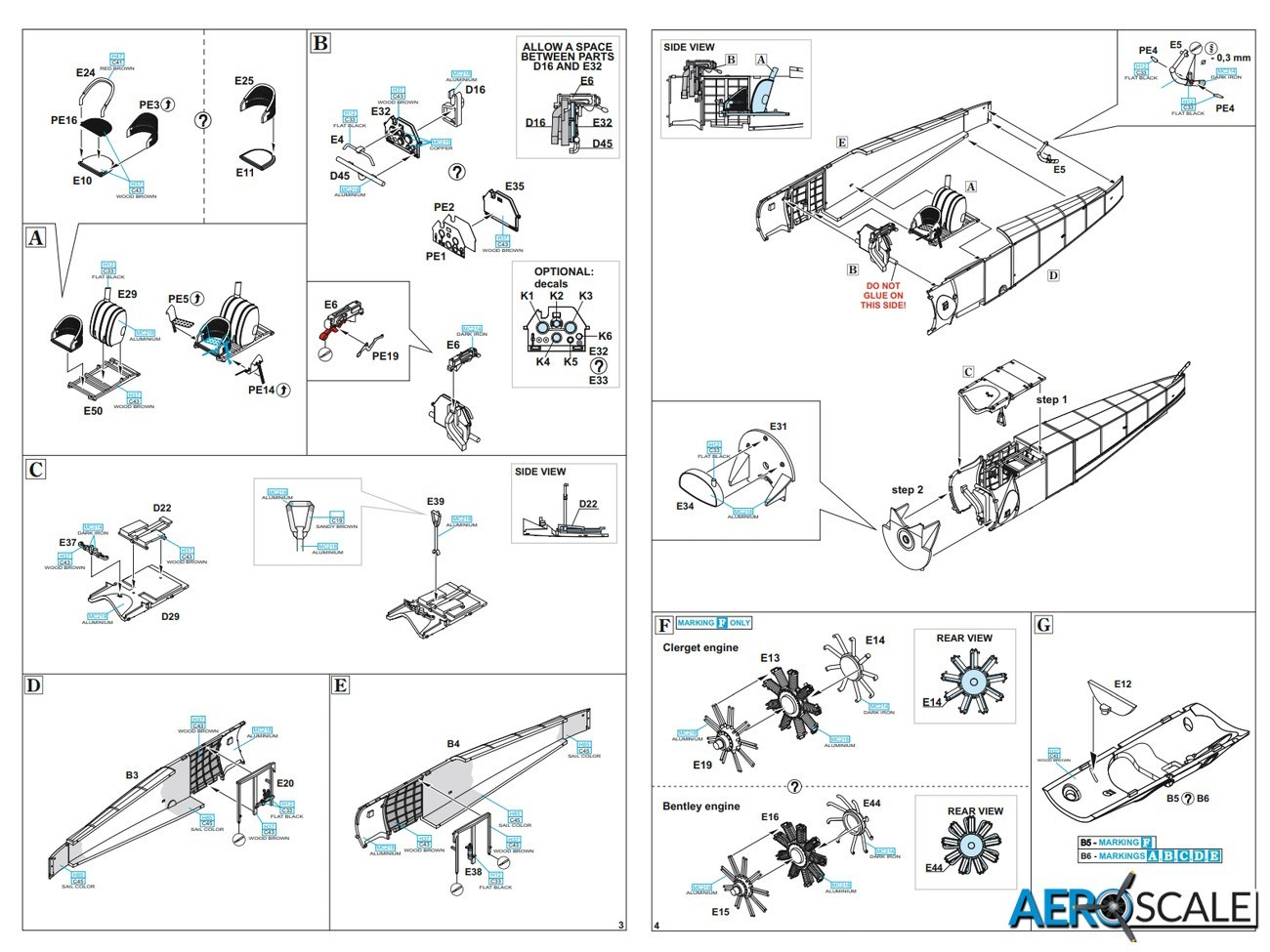
Depending which marking option you go for, there are two styles of wheel, with the difference being the additional stitching on the spoke covers at the rim. The depiction of canvas stretched over the spokes of the wheels is nicely done. There are two types of right hand undercarriage leg, one with an anemometer the other without. Thankfully this time the anemometer is plastic and attached to the strut.
The kit includes the Vickers machine gun fitted in the cockpit and a Lewis machine gun fitted on the upper wing. The magazine for the Lewis gun is separate. Option F is interesting as it was fitted with bombs. It joined a task force to support the fight against the Russian Bolsheviks. The bomb racks are PE and the bombs themselves are plastic.
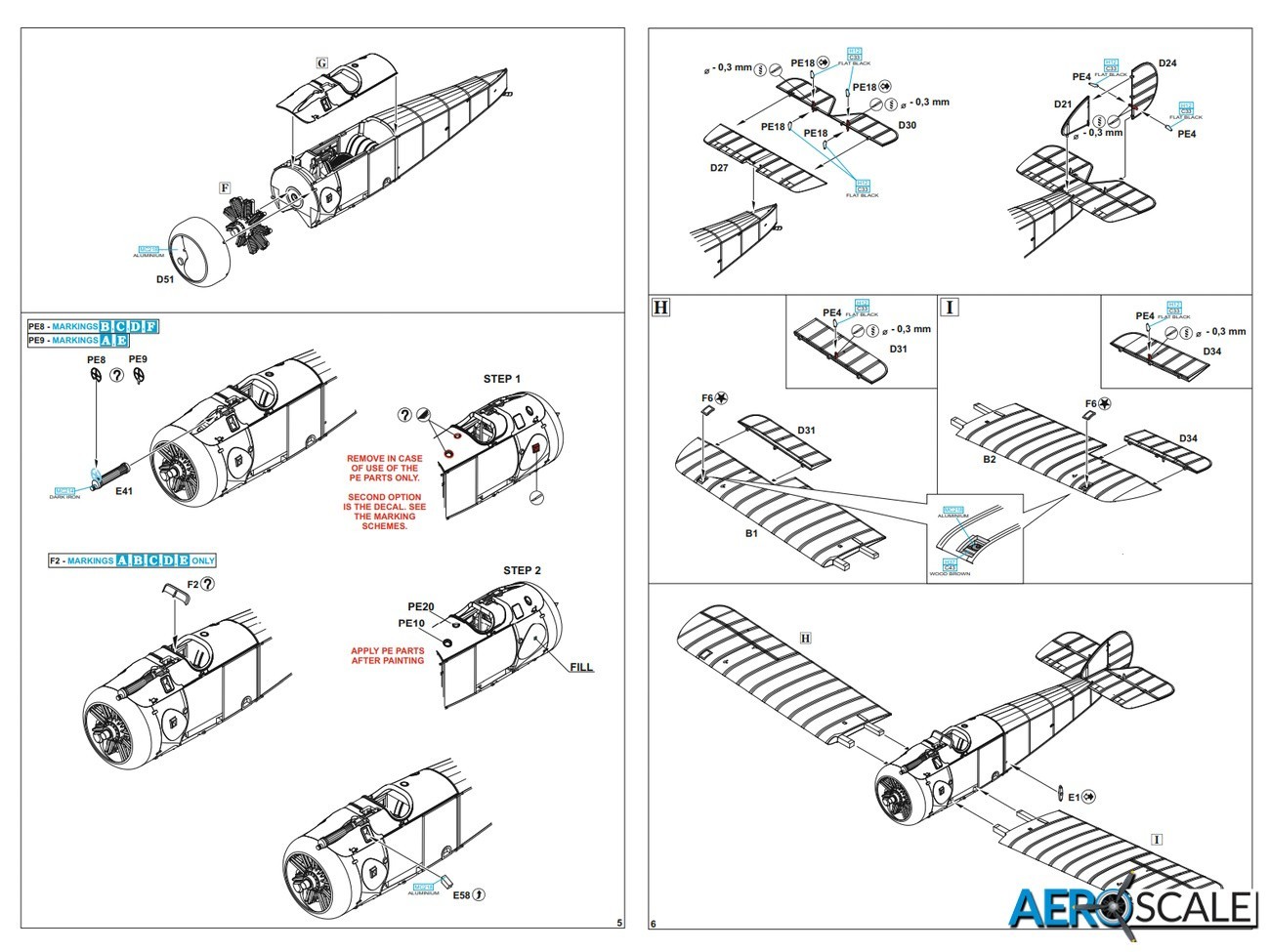
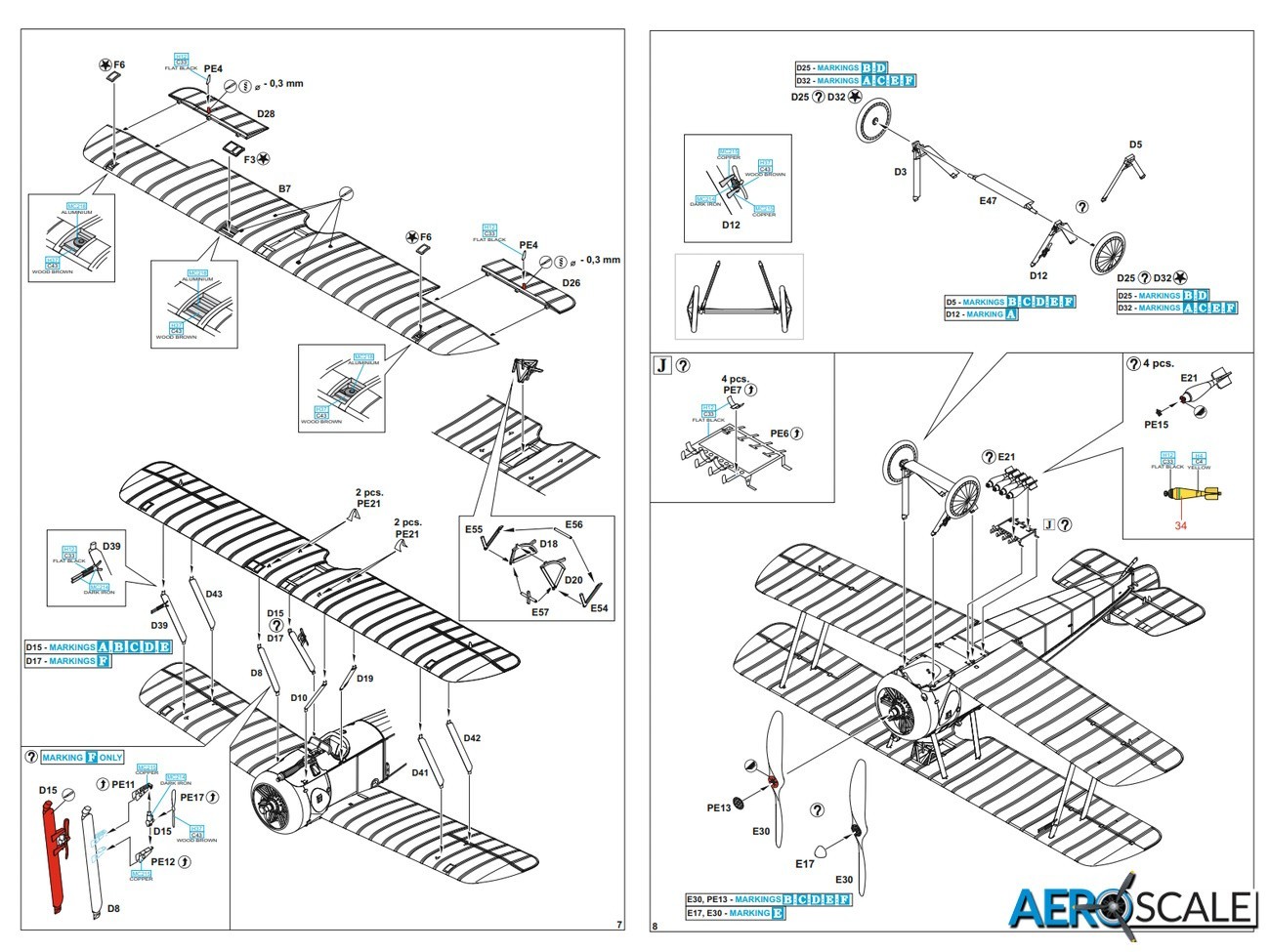
PE parts include seat, instrument panel, seat belts, tail skid detail, gun sight, control cable horns, and cabane gun support.
There are paint masks for the tyres, wing inspection ports and windscreen
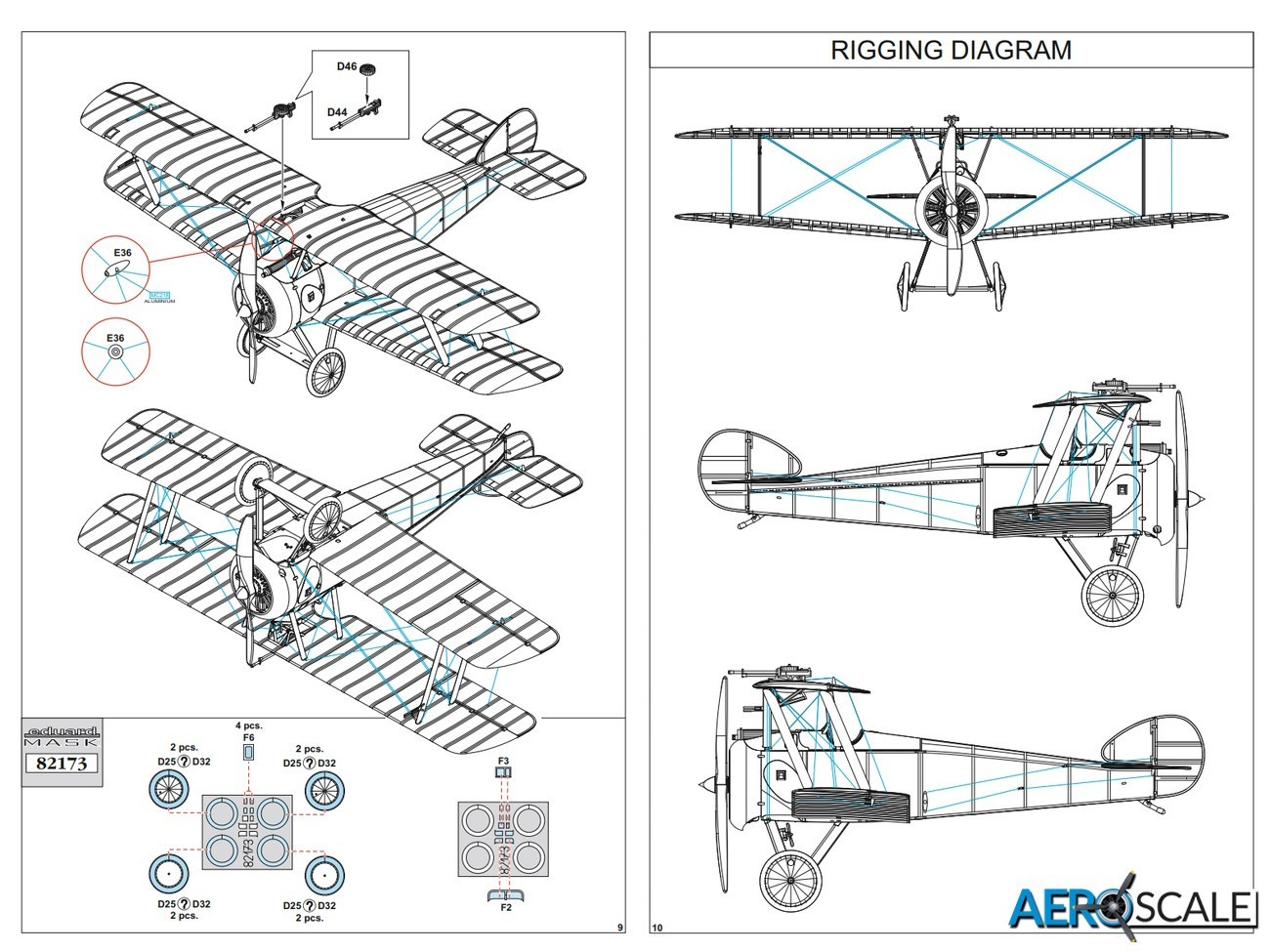

Eduard has produced the decals and there are quite a few. They are glossy with excellent colour strength and the register is very good. The blue and white cheque pattern on the engine cowl of option ‘A’. Also included as is the cross hatched white lines for option ‘C’. The wing roundels are split to make the fitting easier over the gap between the wing and aileron.
There are some interesting marking options including a post WWI aircraft:
- A N6755, Capt. Bernard A. Smart, HMS Furious, July 1918
- B N6812, FSL Stewart D. Culley, Special Flight, NS Felixstowe, United Kingdom, July 1917
- C N6602, HMS Furious, April 1918
- D N6764, HMS Lion, April-June 1918
- E N6822, HMAS Sydney, mid 1918
- F N8130, HMS Vindictive, Koivisto, Finland, October 1919.
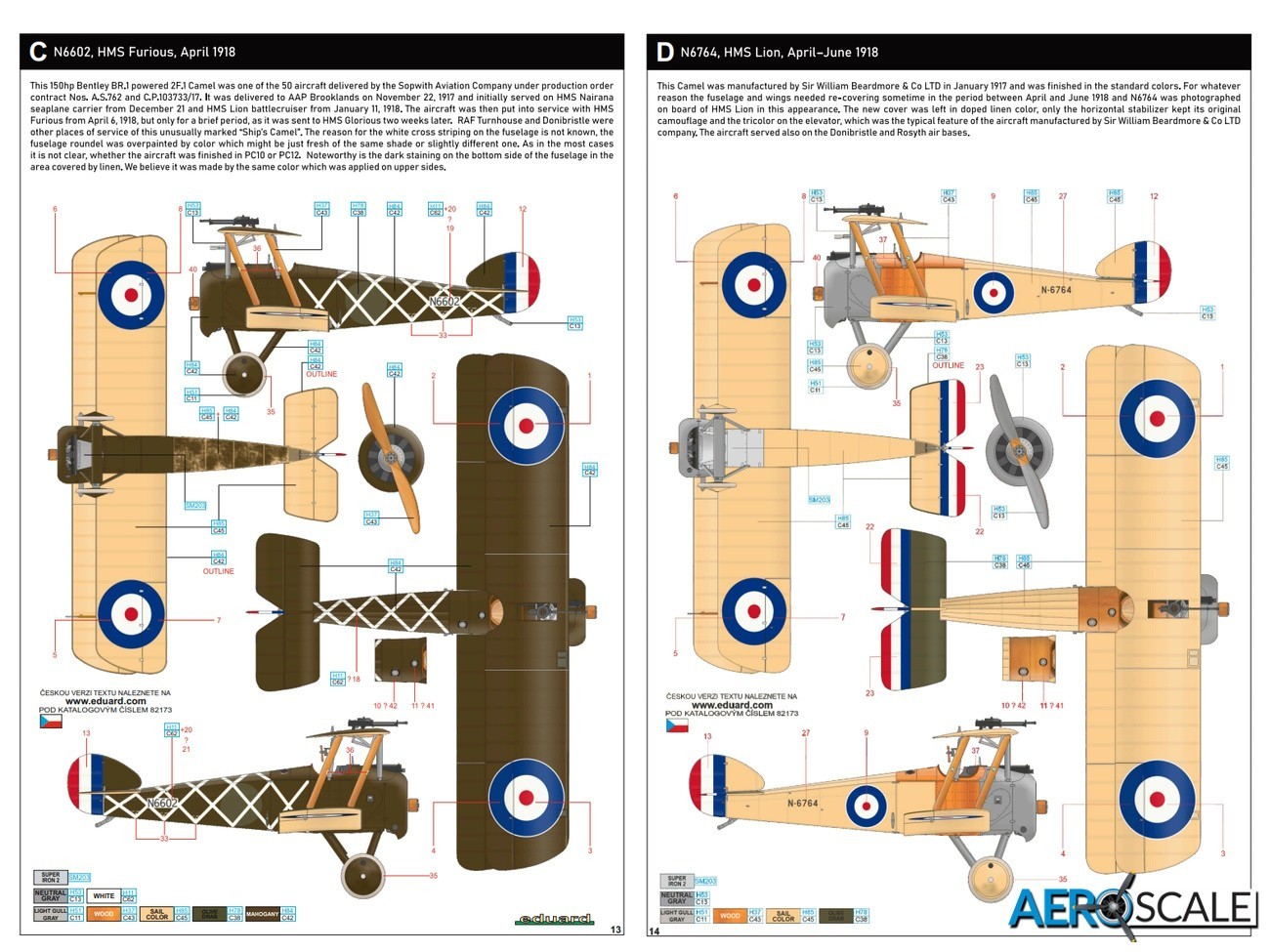
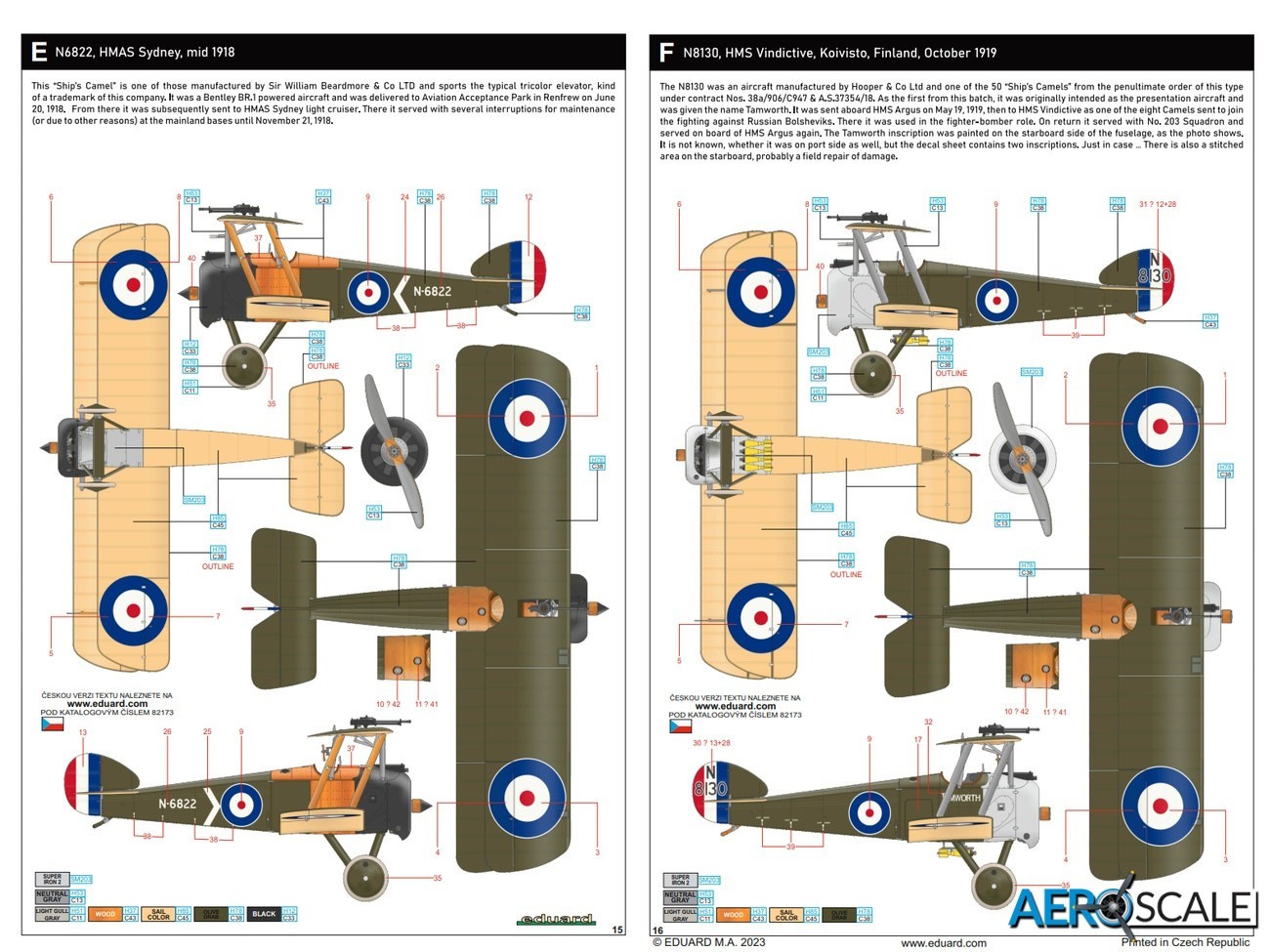
Instructions are in the form of a A4 format 16-page booklet. The parts map is useful as the parts not needed are shaded in blue. There are lots of alternate parts, a definite plus with Eduard kits. There are drawing including two side profiles and head on view showing the rigging. The painting guide has upper and lower plan and side view of each marking option. Gunze Sangyo and Mission paints are used for reference, but it is simple enough nowadays to cross reference these with your favoured paints.
Conclusions
The Sopwith 2F-1 Camel is a superb looking release. Very impressed with the plastic detail and the pre-coloured PE parts are just the icing on the cake. Great choice of marking options too, Eduard really seems to have done their homework. Nicely done Eduard
Price from Eduard: 475,21 Kč [£16.94]
Our thanks to Eduard for the review sample. You can find this kit at the Eduard store.
82173 - Sopwith 2F-1 Camel ProfiPACK – 1:48
Please remember, when contacting retailers or manufacturers, to mention that you saw their products highlighted here – on AEROSCALE.




















